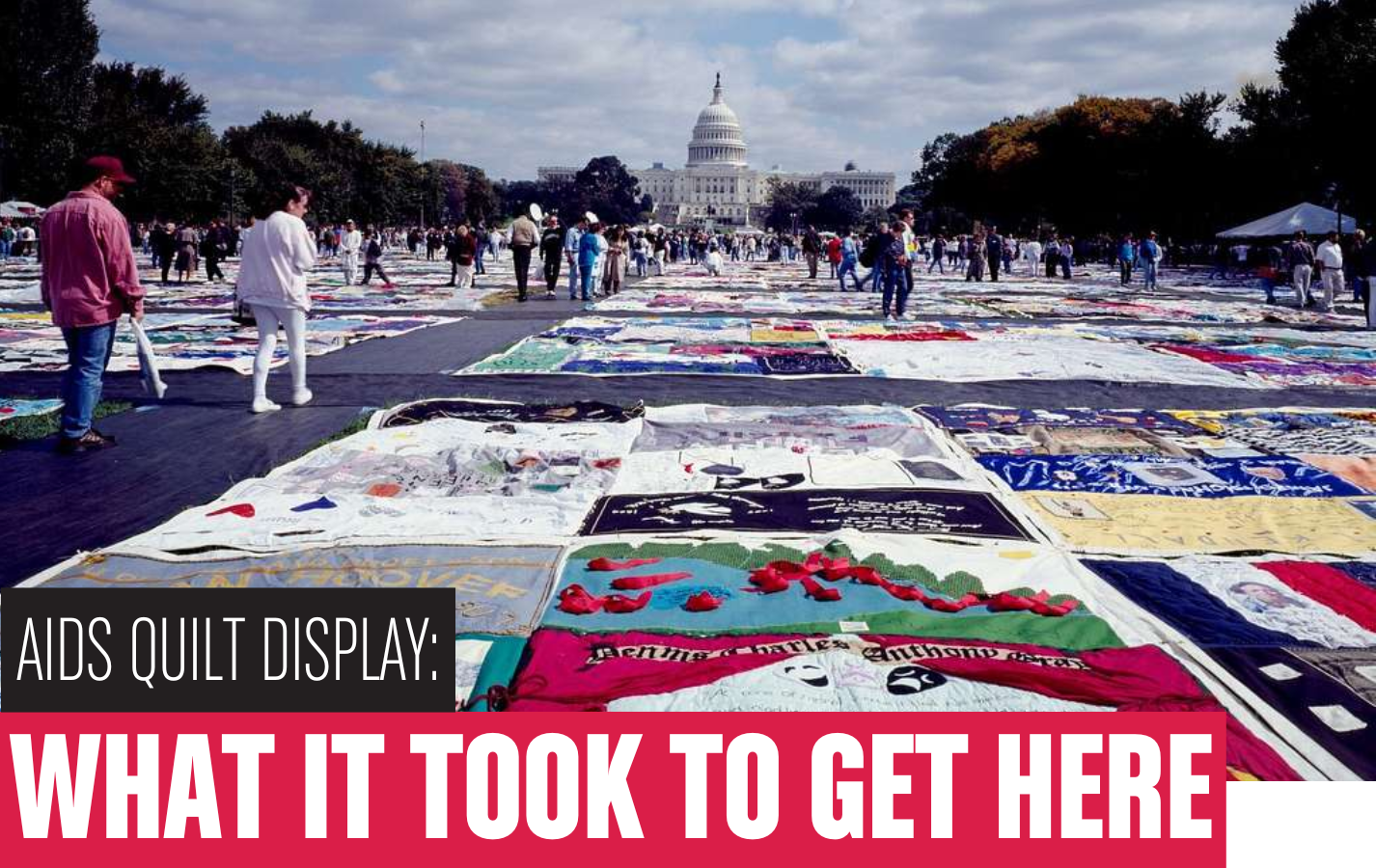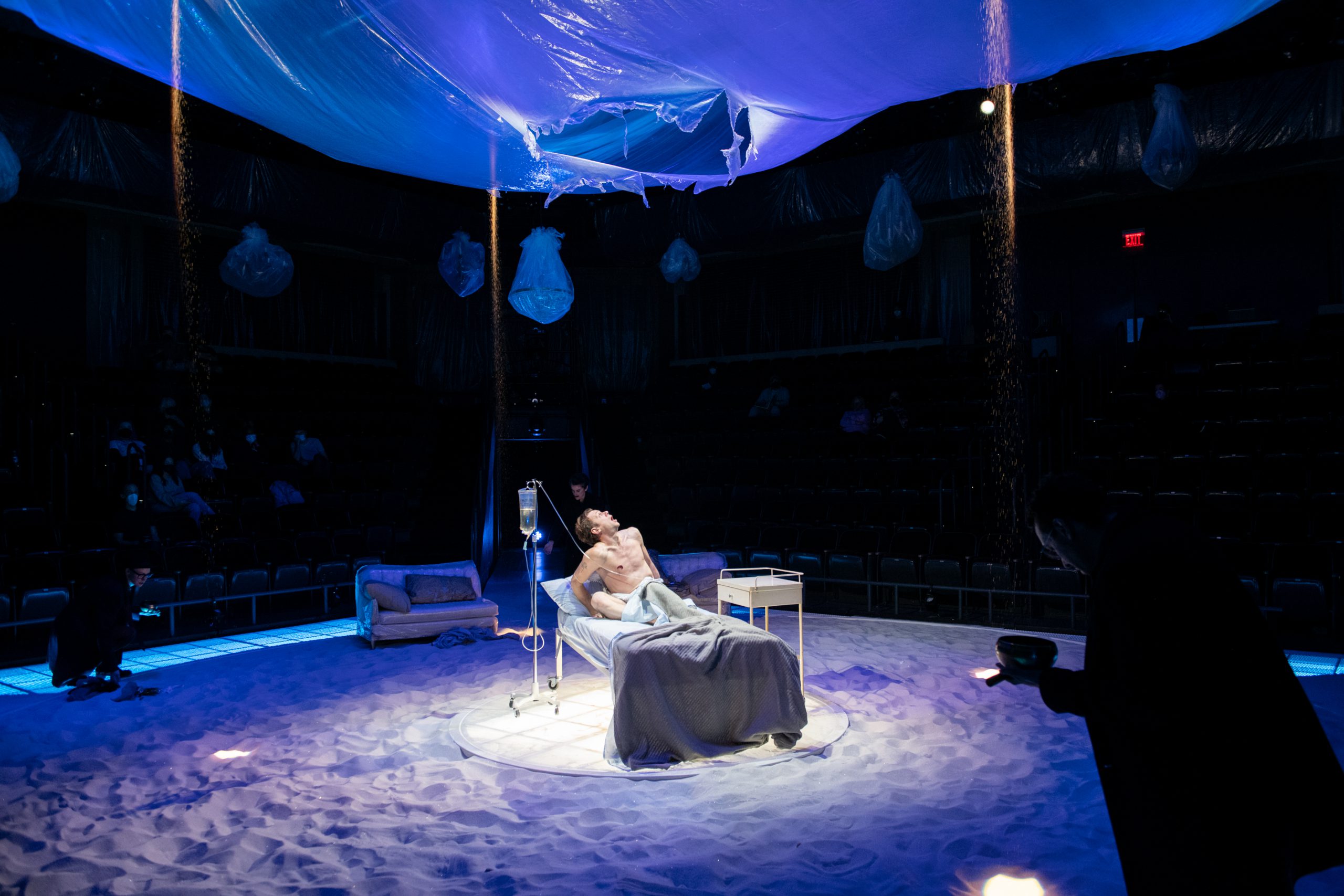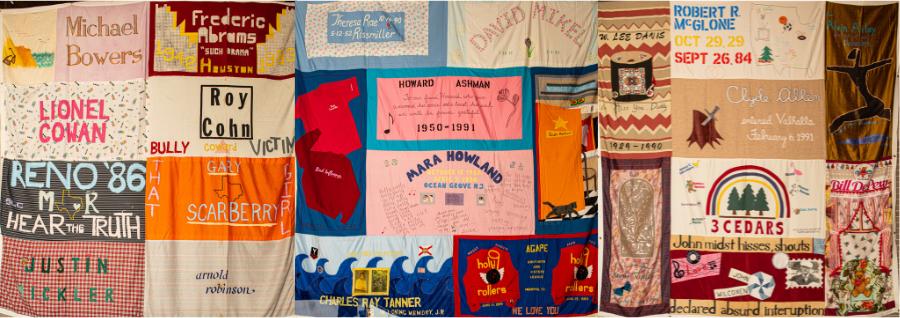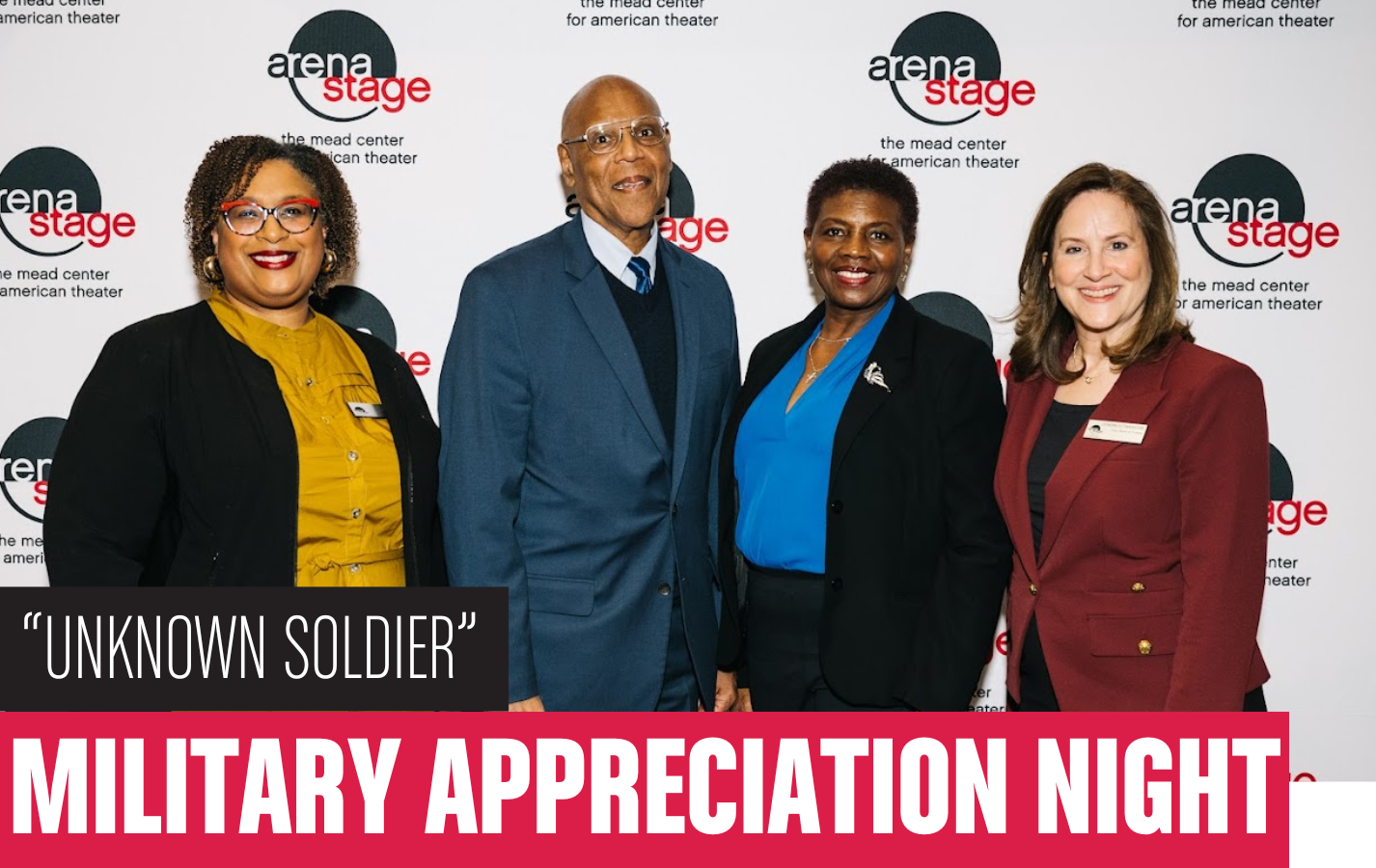
Photo of the AIDS Quilt in June of 1987 by Carol M. Highsmith
We are deeply honored to display three panels of the National AIDS Memorial (NAIDSM) Quilt in our Grand Lobby during the run of Angels in America, Part One: Millennium Approaches. The largest community arts project in the world, the Quilt is an ongoing memorial to the 700,000 U.S. lives lost since the first cases of HIV/AIDS were reported. The NAIDSM brings quilt blocks to communities across the United States to raise greater awareness and education about HIV/AIDS and to remember those we have lost.
Dramaturg Zoë Elizabeth Lillis’ role
As a believer that art is only as good as the intention behind it, dramaturg Zoë Elizabeth Lillis wanted to connect Arena’s production of Angels in America to something real. Zoë discovered the NAIDSM provided community displays of the Quilt, and immediately asked her supervisors if displaying the quilt would be a good idea. Everyone agreed it would enhance the lobby and patron experience. With the NAIDSM’s support, Zoë was able to have three specific panels delivered to the main lobby to provide a greater sense of context and authenticity for our patrons.
“I don’t know that words can describe what it means or how important it is for the Quilt to be on display here at Arena. I think one of the most valuable things that we can do as artists is remind our audiences why the work we do matters and who the real people are at the heart of it. Roy Cohn was, in Kushner’s words, “all too real.”
Alvin Ailey’s legacy continues to shape the worlds of dance and activism in immense ways. Howard Ashman, responsible for some of the most beloved Disney music and stories of all time (I would challenge you to play anything from The Little Mermaid and not find at least one person joyfully singing along), once directed his own show at Arena, in the very theater that Angels is in today.
In a production as beautiful as this one, it can be easy to get wrapped up in the world created around you. I really hope that the AIDS Memorial Quilt will remind people to take some time and feel what this work, and this moment, really means,” Lillis said.

HIV/AIDS: Context and History
HIV and AIDS are linked viruses, with the former being the initial stage of infection. HIV (Human Immunodeficiency Virus) attacks the immune system, specifically the white blood cells, making a person much more vulnerable to other infections and diseases while AIDS (Acquired Immunodeficiency Syndrome) is a chronic, potentially terminal condition resulting from HIV’s effects on the immune system. Currently, there is no cure for HIV; however, it can be treated to lower the viral load to undetectable levels.

Nick Westrate (Prior Walter) in “Angels in America, Part One: Millennium Approaches” at Arena Stage at the Mead Center for American Theater running March 24 through April 23. Photo by Margot Schulman.
HIV is believed to have arrived in the U.S. around 1970, but it only garnered attention from the public in the early 1980s. The first recognized American patient of the AIDS pandemic was Ken Horne, a gay man living in San Francisco. Horne was reported to have Kaposi’s Sarcoma, an aggressive cancer linked to weakened immunity. It only took one year for AIDS to take his life.
In Angels in America, set in 1985, Prior is infected with the virus, and cites Karposi’s Sarcoma when he describes his symptom: “K.S., baby. Lesion number one. Lookit. The wine-dark kiss of the angel of death.”
Discrimination by the Press and Reagan Administration

New York Times. July 3, 1981
During the 1980s, AIDS was considered a “gay virus” that could only infect homosexuals. The New York Times wrote two articles in 1982, “Rare Cancer Seen in 41 Homosexuals” and “New Homosexual Disorder Worries Health Officials.” The former caused Kaposi’s Sarcoma to be coined the “gay Cancer” and the latter led to AIDS being labeled as the gay-related immune deficiency, or GRID.
Learn more about the history of the AIDS epidemic and its importance to the setting of Angels in America in the Dramaturgy Note from Otis Ramsey-Zöe.
The Quilt and its Journey
Although the fight for recognizing AIDS was messy and ugly, the idea of the Quilt came from peace.

The AIDS Quilt is laid out on the National Mall July 23, 2012 as part of the 19th International AIDS Conference in Washington, DC. Karen Bleier/AFP/GettyImages
The Quilt was conceived in 1987 when Cleve Jones made the first panel for his friend, Marvin Feldman, who succumbed to the virus. The 3’ x 6’ panel represents the standard size of a grave plot. Jones came up with the idea when planning a San Francisco LGBT march; he noticed that when the names of the deceased were lined up, they resembled a patchwork quilt. Later, many other friends, family, and loved ones followed suit to make their own panels.
Here is a short timeline of the Quilt’s journey.
Timeline
- October 1987: The Quilt was displayed on the National Mall for the first time. At this time, it held 1,920 victims’ names.
- October 1988: After traveling across the U.S., the Quilt was displayed on the Ellipse in front of the White House, bearing 8,288 names.
- October 1992: The Quilt, including names from all 50 states and 28 countries, returned to the National Mall.
- January 1993: The NAMES Project (which cared for the Quilt in Atlanta) marched in President Clinton’s inaugural parade, and 200 volunteers carried Quilt panels down Pennsylvania Avenue.
- October 1996: The last display of the entire AIDS Quilt covered the entire National Mall. This was also the first time a sitting president (Clinton) visited the Quilt.
- June-July 2012: Over the course of two weeks, the entire AIDS Quilt was once again presented on the National Mall, with 1,500 blocks of panels being displayed each day. It was now too large to present in its entirety on the Mall all at once, so it was also displayed at 50 locations around the city, including Arena Stage at the Mead Center for American Theater
- March-April 2023: Three panels of the AIDS quilt make their appearance at Arena Stage. It will stay there for the duration of Angels in America Part One: The Millennium Approaches, running until April 23rd, 2023.
Today, the Quilt has over 100,000 names on it, and would stretch 56 miles if each panel was laid side by side. It is considered the largest piece of community art in the world, and was nominated for a Nobel Peace Prize in 1989.

Photos of the AIDS Quilt Display by Margot Schulman.
While each block of the National AIDS Memorial Quilt holds many names, the panels we have chosen to display each include someone important to Arena Stage and the work that we do. These panels acknowledge:
- Roy Cohn, an inspiration for the character of the same name in Angels in America and a deeply divisive figure known for his public anti-gay rhetoric.
- Choreographer, dancer, director, and activist Alvin Ailey best known for founding the Alvin Ailey American Dance Theater.
- Lyricist, playwright, and director Howard Ashman. Ashman, a co-creator of Little Shop of Horrors and famous Disney collaborator, directed God Bless You, Mr. Rosewater, for which he also wrote the book and lyrics, at Arena in 1981. It was performed on the Fichandler Stage – the same stage where Angels in America is being performed.
Angels in America is playing in the Fichandler Stage until April 23rd. Get your tickets here!




